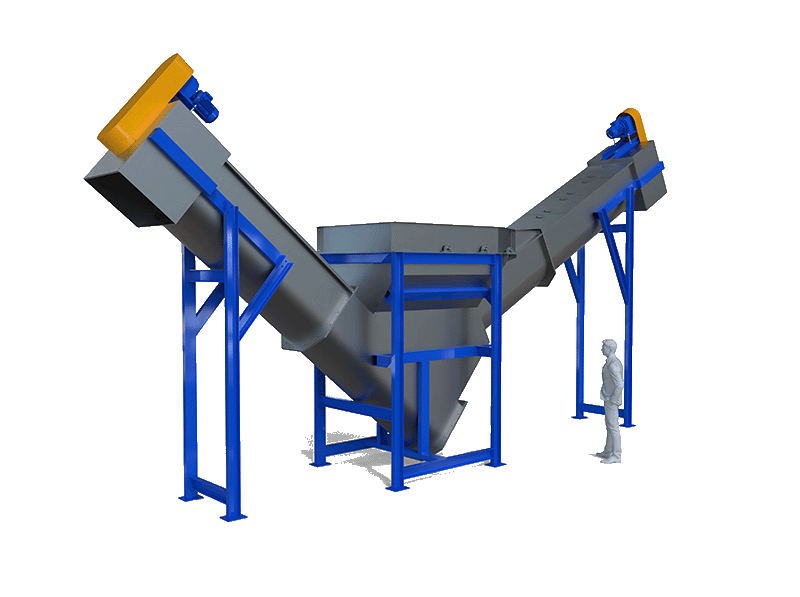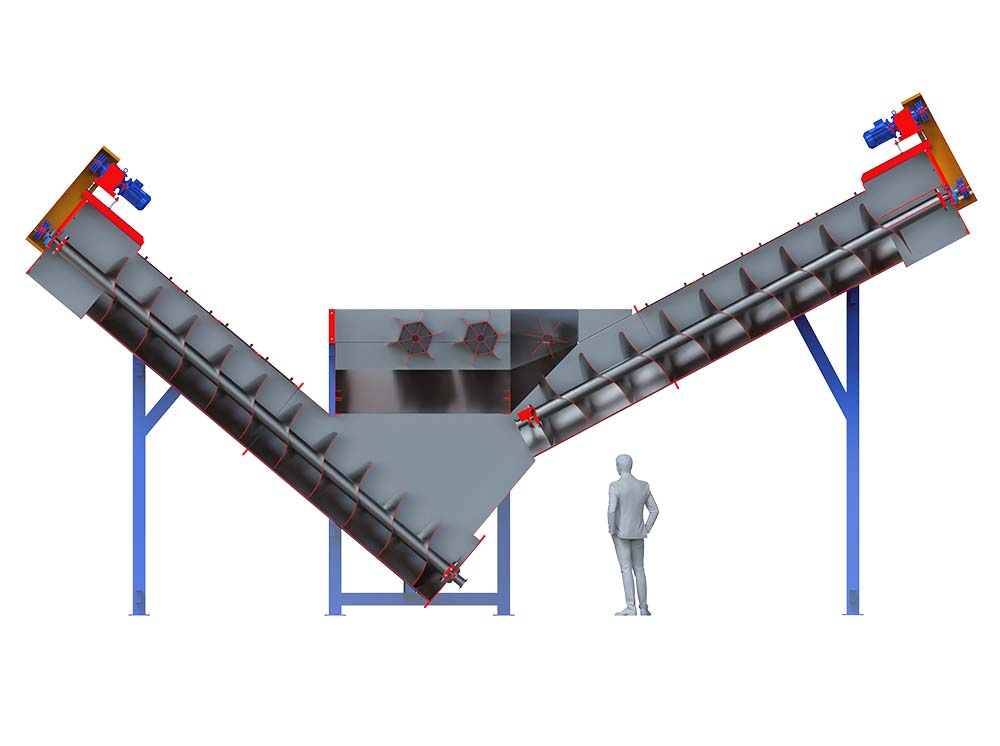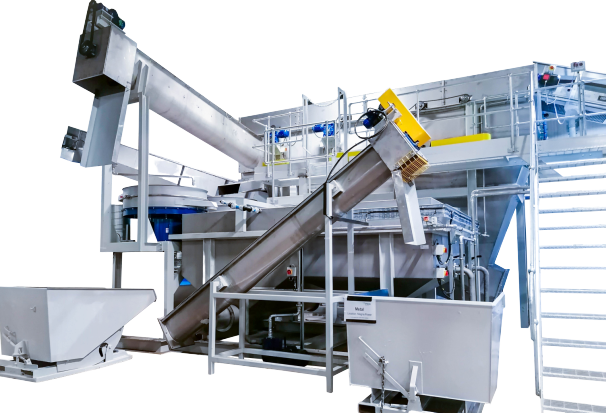Rotajet sink-float tanks separate various types of plastics by density whilst removing contaminates prior to upstream processing. Water is generally used in float sink tanks as the density media.

The gravity of water is 1000kgs / M3. This makes it ideal for the separation of polypropylene and polyethylene from PVC`s and ABS.
Other contaminants such as glass, grit and dirt will sink because of their denser structure. In some applications the water density can be increased by adding various chemicals. This will then allow other material types to be separated using the same method.
Materials that are denser than the liquid will sink to the bottom

Materials with less density to the used liquid will float to the surface

Rotajet float sink tanks are typically fed by a belt conveyor, screw auger or blower. Depending on the application the material can be discharged onto the surface of the tank, or fed by a screw feeder.
The screw feeders, are mounted above the surface of the liquid and are submerged into the tank, this gives a uniform flow into the tank, breaks up any lumps, and ensures that all materials are fully submerged at the start of the process. This produces a high purity product as all particles are forced to either float or sink.
The floating fraction is driven along the surface of the float sink tank by a series of rotating paddles. Each paddle completely submerges the floating fraction as it is pushed along the surface of the float sink tank. The speed of the rotating paddles can be changed by the PLC, varying the agitation present and the discharge rate. The floating fraction is transferred into an incline discharge screw via a weir at the end of the float sink tank.
The incline discharge screw body is manufactured with easy to replace screens; these screens allow the water from the discharge weir to be screened from the floating fraction. The water is then fed by gravity into a Rotajet Vibratory Sieve, normally fitted with a 300-micron screen. The filtered water is then pumped into a holding tank, ready for reuse. We recommend that the floating fraction is discharged into a Rotajet Mechanical Dryer. The water removed during this process can also be recirculated through the vibratory sieve for filtering and reuse.
For optimum performance, the level of working fluid has to be maintained in the Rotajet float sink tank. This is done by reusing the filtered solution in the storage tanks and introducing fresh solution as required.
| Plastic Type | Density/g/cm3 | Uses |
|---|---|---|
| Polypropylene | 0.90 - 0.92 | yogurt cups, plasticware |
| Low Density Polyethylene | 0.91 - 0.93 | squeezable bottles |
| High Density Polyethylene | 0.94 - 0.96 | milk bottles, bags |
| Polystyrene | 1.03 - 1.06 | egg cartons, packing peanuts |
| Polyethylene Terephthalate | 1.35 - 1.38 | water bottles |
| Polyvinyl Chloride | 1.32 - 1.42 | juice bottles, cling wrap |
We aim to get back to any enquiry within 12 hours, so please contact us if you are interested in a specific machine or would like to discuss an individual cleaning application. Our friendly team are happy to help via email at info@rotajet.co.uk or by phone on +44 (0) 1924 271446.
Contact us at info@rotajet.co.uk